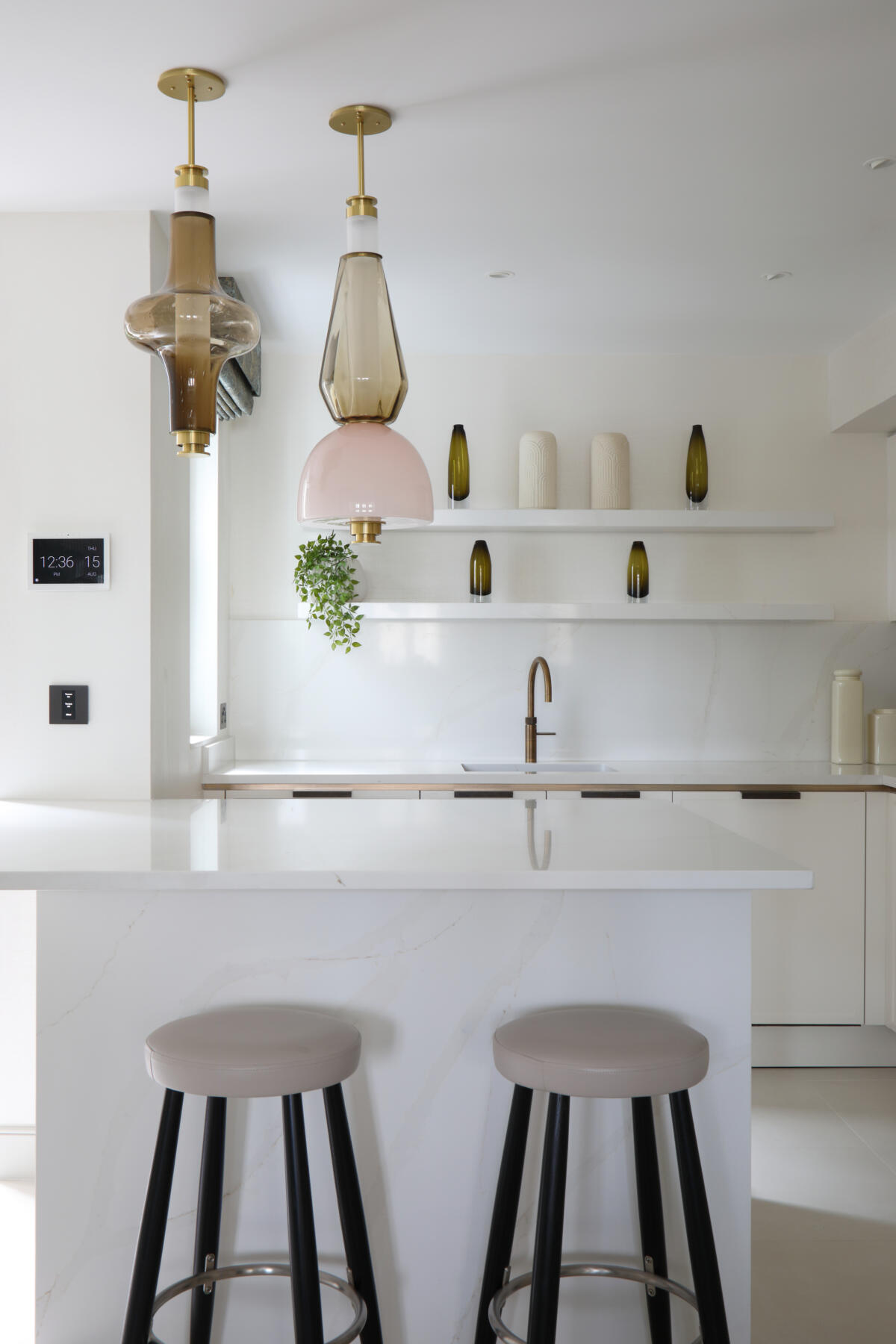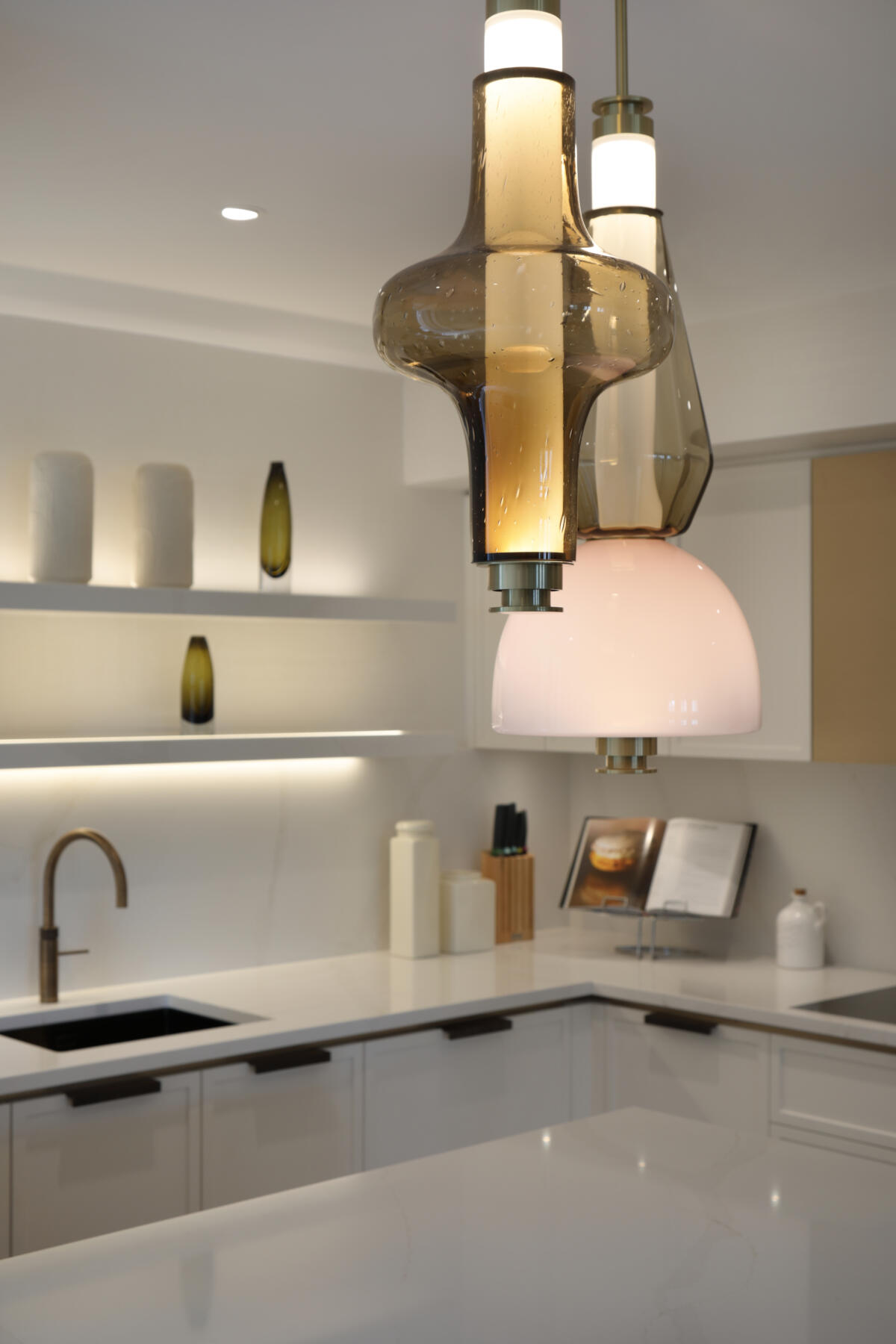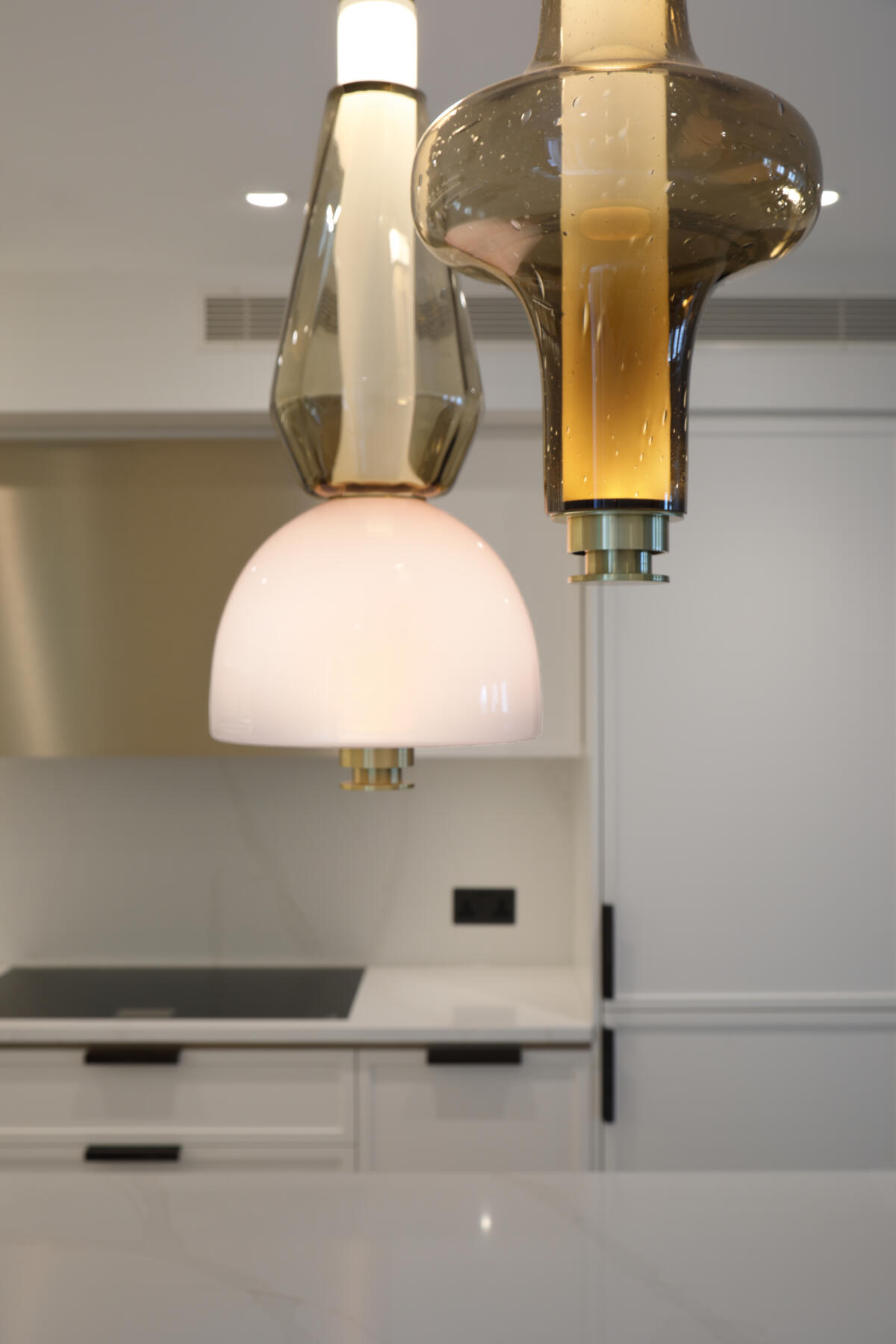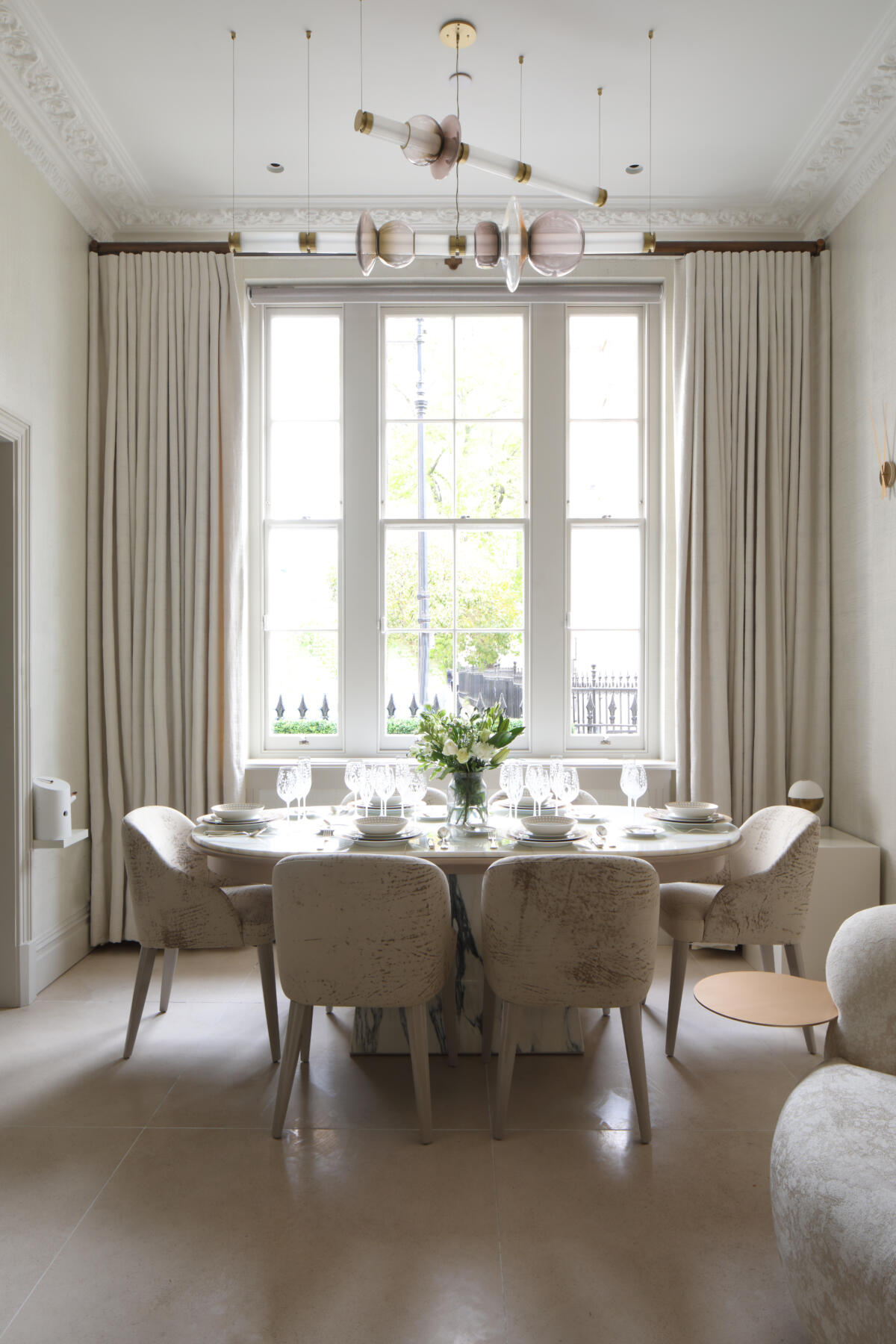Start building your dream
In Conversation With Juliette Byrne: The Art of Timeless Elegance
06 June 2025
Interviews
With over three decades of experience and a reputation for creating elegant, timeless interiors, Juliette Byrne is one of the UK’s most respected names in residential design.
In this exclusive interview, Juliette reflects on her journey from the Chelsea School of Art to founding her own studio, shares the inspirations behind her signature style, and explores the evolving role of lighting in contemporary interiors. From quiet luxury to bold statement pieces, she offers thoughtful insights into the art of designing homes that are both beautiful and deeply personal.
A Lifelong Passion for Design
Juliette, can you tell us a bit about your journey into interior design? What first drew you to the profession?
Interior design has always been a part of my life. After graduating from The Chelsea School of Art and continuing my training with Conran, I knew I had found my path. I founded Juliette Byrne in 1988, and since then, it’s been an incredible journey spanning over 38-years and I still absolutely love what I do. Whether I’m coordinating a building site, leading a team of designers in the studio, or collaborating with top architects and surveyors, my passion for design remains just as strong. It’s a career that’s constantly evolving and always rewarding. The variety, the creativity, and the ability to transform how people live, those are the things that drew me to the profession and still inspire me every day.
You’ve built a name for creating elegant, timeless interiors. How would you describe your signature design style?
Our style is best described as elegant, sophisticated, and enduring, blending classic influences with contemporary sensibilities. We’ve built a reputation for creating serene, beautifully balanced interiors that feel both timeless and completely tailored to each client. At the heart of our approach is a belief that nothing is too much trouble. We take pride in our attention to detail and our ability to uncover potential where others might see limitations whether it’s reimagining an awkward space or harmonising disparate elements in a renovation.
Where do you tend to draw inspiration from, whether places, people, art, or materials?
Every project we take on is unique, shaped by the personality, lifestyle, and vision of the client. In many ways, our clients are our greatest source of inspiration. It’s through our conversations and collaborations with them that ideas begin to take shape. I often travel with clients, sourcing pieces together and discovering what truly resonates with them. From Parisian flea markets to Lorfords, Europe’s largest distributor of decorative antiques, these journeys offer an incredible source of inspiration. They’re filled with rare finds, beautiful craftsmanship, and unexpected treasures that often become the soul of a room. Those personal experiences, shared moments of discovery, help us design homes that feel deeply individual and layered with meaning. It’s not just about aesthetics, it’s about creating a narrative within the home that reflects the people who live there.
How has your aesthetic evolved over time? Do you find your clients' expectations have changed as well?
Over the years, the aesthetic has become more refined and pared-back. Less about making a statement and more about creating a sense of calm, comfort, and longevity. While the foundation of my work has always been rooted in elegance and balance, there's now a stronger emphasis on authenticity and subtlety. Clients today are seeking something to feel real, not overly polished or ostentatious. The rise of quiet luxury is very much a reflection of that. No one wants anything too showy. Instead, it’s about the weight of a perfectly made sofa, the richness of natural materials, and the harmony of a room that has been considered from every angle. Much like in fashion, where there’s been a move away from bold logos to a more discreet form of luxury, interiors are following suit. Quiet luxury speaks to timeless elegance. It whispers rather than shouts, echoing that ‘old money’ sensibility.
Designing with Purpose: Behind the Projects
In the Duplex Belgravia project, you balanced classic architectural detailing with a modern finish. Can you talk us through the design brief and your approach to the space?
This Knightsbridge apartment was completely reimagined for a young, design-savvy client. Our brief was to create a refined, turn-key home that blended classic detailing with contemporary elegance and quiet luxury.
One of the standout features is the Gabriel Scott Luna Pendant, which we used as a sculptural centre piece in the dining area. Its modular glass-bead design and bronze finish add depth, texture, and a warm glow that anchors the room beautifully. We love how the Luna brings a handcrafted, jewellery like quality that echoes the bespoke detailing seen throughout from antique mirrored joinery to hand-painted Fromental wallpaper.
Every element was chosen to feel both elevated and effortless, and the Luna Pendant played a crucial role in creating that balance of form and function, art and utility.
The Penthouse in Mayfair is striking in its contemporary sophistication. What were some of the key considerations when designing a space with such panoramic views and high ceilings?
With such dramatic views and soaring ceilings, it was essential to create a sense of balance, designing a space that felt expansive yet grounded, luxurious but welcoming. Scale was key, especially in selecting statement pieces that could hold their own without overwhelming the architecture.
In the kitchen, we introduced a sculptural mix of Gabriel Scott’s Luna Kaleido pendants to draw the eye upward and add a sense of playfulness and artistry. The combination of textures and finishes created a layered, luminous effect that enhanced the open-plan layout while anchoring the space with a bespoke feel.
Throughout the penthouse, we focused on refined finishes, custom joinery, and thoughtful lighting to complement the natural light and frame the views, ensuring the design felt cohesive and considered, not just grand.
What role did lighting - especially decorative fixtures like those from Gabriel Scott - play in achieving the ambiance in these homes?
Clients increasingly want that wow-factor light to bring impact and drama, elegance, and flair. It’s the equivalent of a statement necklace for your interiors. A sculptural chandelier, bold pendant, or artistic light installation can completely transform a room and serve as a powerful design anchor. An amazing decorative light fixture like the Duo Luna Pendent is like hanging a piece of jewellery in a home. A beautiful pendant adding a sense of glamour and artistry tying the space together.
In your Belgravia project, the lighting adds a sculptural quality. What attracted you to the Gabriel Scott pieces, and how did they help enhance the narrative of the space?
We were immediately drawn to the Gabriel Scott Luna Pendants for their playful elegance and sculptural form. In the Belgravia project, we used a duo of Luna Pendants to inject personality and charm into what could have been a very understated space. They became the unexpected heroes of the room, totally bold, fun, and completely captivating. The Duo of Luna Pendants elevate a space while adding a pop of energy, proof that good lighting doesn’t just illuminate a room, it can define it.
Expert Tips for Timeless Living
What’s your go-to strategy for making an entranceway or hallway feel special and welcoming?
The entranceway is the heartbeat of the home, it sets the tone for everything that follows. It’s the first impression your guests receive, so we always recommend making a statement with exceptional lighting. A striking chandelier or pendant can instantly elevate the space, creating drama, warmth, and a sense of arrival. Lighting is one of the most powerful and emotional tools in a designer’s repertoire. It not only enhances the architecture but also helps the home evolve throughout the day. In an entrance, it sets the scene immediately, creating that all-important welcome moment. Whether it’s sculptural, glamorous, or quietly elegant, the right light makes all the difference. We love the huge Harlow light from the Gabriel Scott collection for a hall-way.
Lighting can make or break a room - do you have any golden rules when selecting lighting for different rooms in the home?
Lighting is one of the most powerful tools in interior design, and getting it right is crucial. Our golden rule is to always consider lighting early in the design process. It should never be an afterthought, but rather an integral part of the architecture and atmosphere of a home. Each room serves a different purpose, so the lighting should reflect that. In kitchens, task lighting is essential over preparation zones, sinks, and cabinetry but we also like to layer in decorative pendants and ambient downlights to give the space warmth and versatility. The right lighting can transform a kitchen from purely functional into a welcoming hub for family life and entertaining. In bathrooms, it’s all about flexibility. We use dimmable lighting to shift from bright and energising in the morning to soft and relaxing in the evening. Facial lighting is key, vertical lighting at mirrors is far more flattering than overhead spots. We also love integrating subtle lighting into niches, under cabinetry, or within ceiling slots to create a calm, spa-like mood.
Throughout the home, we believe in layering light, combining ambient, task, and accent lighting to create depth and dimension. Accent lighting, such as concealed LEDs in joinery or up-lights beneath sculptural features, helps elevate everyday spaces and give them a touch of theatre.
Ultimately, the golden rule is to let lighting serve both function and feeling.
How do you balance aesthetic beauty with functionality, especially in high-use spaces like kitchens and bathrooms?
Balancing aesthetic beauty with functionality is at the heart of every successful design particularly in high-use spaces like kitchens and bathrooms. You have to think, of lighting from a practical angle as well as being visually appealing. In kitchens, we ensure lighting is carefully layered to serve different purposes throughout the day. Task lighting is key, particularly over prep zones, sinks, and counters but we never let it feel clinical. We incorporate beautifully designed pendants over islands or dining areas for a decorative statement, often softened with surrounding downlights to ensure surfaces are properly lit. It’s this dual approach is functional yet atmospheric. We love playfully using lighting from Gabriel Scott’s Luna Series and Luna Kaleido Series the most for kitchens.
In bathrooms, the goal is to create a sanctuary. Lighting here needs to adapt to various moods, from energising morning routines to soothing evening rituals. We use dimmable circuits to allow for scene-setting, integrating lighting into niches, under cabinetry, and even within ceiling slots for a soft, spa-like glow. Mirrors are lit from the sides rather than above to provide flattering facial light without harsh shadows, while focal points like freestanding baths are often subtly lit from below to highlight their sculptural form. The Luna Scones with alabaster and soft lighting are perfect for creating ambience in a bathroom.
Ultimately, it’s about designing light as much as designing the room itself.
The Creative Process: From Vision to Reality
Do you prefer to start with statement pieces, like lighting, and build around them—or do those elements come later in your process?
We love to identify a key focal point early on, whether that’s a statement light, a striking piece of art, or a beautifully crafted piece of furniture. These elements can anchor a room and help guide the rest of the design. Lighting in particular, is something we like to plan from the very beginning. It’s not just a decorative element, it shapes the atmosphere and function of the space. A sculptural pendant or chandelier can set the tone for the entire room, acting as both a visual centrepiece and a source of ambience.
Are you seeing any emerging trends or shifts in client preferences when it comes to residential interiors?
We’re seeing a shift where lighting is no longer just a design detail, it’s becoming a form of personal expression and investment. The next big movement in lighting will be the rise of statement lighting as collectible design. Much like investing in a great piece of art or a classic Chanel handbag, clients are beginning to see the value in acquiring exceptional lighting that stands the test of time. Lighting has evolved beyond function and today, it’s all about making a statement. One trend we’re seeing more and more is the rise of the statement light as the must-have fashion accessory for the home. Much like a Chanel handbag completes an outfit, a striking light fixture is now seen as the pièce de résistance that defines a space.
Are there any design rules you love to break?
We love to play around with proportions. Using over scaled lighting in a small hallway can add drama and a talking point. Also using multiple of the same fittings ie in a long hallway can be an effective way of creating an interesting and architecturally elegant space. Also if the space has little natural light it is sometimes a great way to use darker colour palette and then hightlight with directional light a specific area such as feature artwork or a sculpture in a niche.
If you could design a dream space without limitations, what would it be? And what sort of lighting would you choose?
My dream space would be large converted barn in the alps. Using the double height of the building you would be able to create multiple living areas with a central dramatic staircase linking the different floors with a stunning feature pendant that links the different levels. The natural beams and original flagstone floors would be accented with Gabriel Scott lighting and the soft colours of the hand-blown glass would add a jewel like quality to the space. I would want to create different living spaces – some for entertaining large groups of guests and then more intimate areas for informal relaxing.
What’s one room in the house you feel is most often overlooked—but has the most potential?
We always say the small downstairs loo should never be overlooked. It’s one of the few spaces in a home where you can really afford to be bold, playful, and a little unexpected. Whether it’s through a striking lighting feature, a dramatic wallpaper, or a pop of unexpected colour, it’s the perfect spot to have some fun with design.
These little spaces can act as hidden gems, a place of surprise and delight for guests. There’s nothing better than someone returning to a dinner party with a smile because they weren’t expecting such a charming or witty little room. It’s all about creating those memorable moments, even in the most compact spaces.
Photos courtesy of Juliette Byrne. Discover more on Juliette's website.










